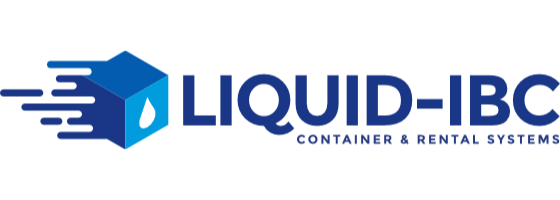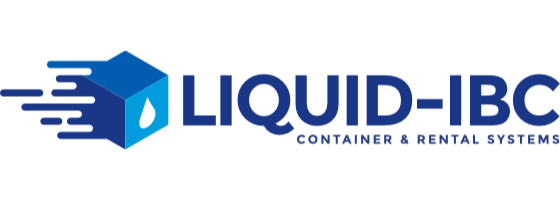FAQs
Frequently Asked Questions
Looking for Process-Specific Answers for Your Business?
Ask an ExpertYes, we sell stainless steel IBCs in a range of shapes and sizes made by SCHAFER WERKE, a leading supplier of reusable containers for handling dangerous, sensitive or hazardous liquid substances, that provide maximum safety and reliability for land and sea transport, and are fire-resistant for at least 30 minutes without a sprinkler system.
SCHAFER Container Systems meet the needs and safety aspects required by chemical, petrochemical, waste disposal/recycling, paint, lacquer, adhesives, plant and building construction business sectors with special requirements for transport and storage.
Yes, both TPS and Schafer containers offer heating solutions for handling thick, heavy, viscous liquids.
TPS bag-in-box containers can be equipped with silicone rubber heater mats with built-in thermostats that can be set to a maximum temperature of 122 degrees F. to prevent viscous products from solidifying during transit and make their discharge easier and less wasteful. TPS Sump Base IBC containers have conic bottoms that slope 166 degrees designed for difficult to discharge liquids, and they can be easily and quickly assembled and packed flat for return transport and storage by just one person.
Heatable stainless steel Schafer containers are insulated and have a heating capacity of up to 120 degrees. To manage liquid temperature during transport, heatable containers with code protected touch control panels allow you to monitor and control temperature settings. The triple temperature monitor and double thermal fuse guarantee the safety and protection of sensitive liquids. They can also be outfitted with stirring devices and level gauges, or they can be fully customized with other application specific accessories.
The liner you need depends on the product you're filling, the container you're using, and your fill method.
We supply over 50 different types of liners in 66, 132 and 264 gallon sizes and materials, including transparent liners for general use, aseptic and blue liners for the food market, metallic barrier films for light and oxygen sensitive products, as well as 100% sterile, irradiated liners.
Please don't hesitate to contact us to discuss the technical aspects of the liners you require for your manufacturing process. We have worked with businesses of all sizes and industries worldwide, and we would be happy to assist you with the technical solutions, products and services to fit your process.
Removable bag-in-box liners safely protect your product inside the container and keeps the container clean and ready for reuse, so that the container can be filled, discharged and re-filled in a continuous cycle. When the container is empty, it can be safely folded and stacked to save on freight and warehousing costs.
The business case for using a bag-in-box system is a reduction in contamination risk, product yield increases, hygiene improvement, and savings in container cleaning, packaging and transportation costs.
The clear savings in packaging waste, container cleaning and shipping costs is why so many companies have been moving to bag-in-box systems and are reasons why you should consider whether a bag-in-box system would work better for your business.
A strong corporate case can be made too, based on the environmental and carbon footprint reductions that can be achieved with reusable and recyclable bag-in-box systems. It's not just a public relations strategy - it's a real community and process improvement.
It's easy to test whether you can achieve savings on freight, storage, water, cleaning, disposal and labor by combining an IBC container with a liner and putting it through your supply chain process to learn whether you can significantly reduce your costs.
Please contact us today for an opportunity to try out the TPS bag-in-box container system in your operation.
Renting your IBC containers can give you unique advantages:
- You can try a short term rental before making a longer term commitment.
- If you rent for 1 to 5+ years, we can arrange to design your containers with your business logo.
- With TPS containers, you are provided with a premium service that delivers your containers and liners to your door and then collects them from their final destination, relieving you of all the responsibility and work associated with return logistics, cleaning and repositioning your IBCs.
Container Rentals Save Money
- No capital outlay, but rather friendlier operational costs, which in many cases, are transferable to the product cost and/or are tax deductible.
- No maintenance and repairs.
- Only rent the number of containers you need, when you need them.
- Return your containers when they're no longer required.
More TPS Bag-in-Box Container Benefits
- Clean, ready to use containers that avoid contamination between lots and costly clean vessel re-certification.
- Greatly reduced carbon footprint on freight, as well as no cleaners and detergents and/or water treatment facility. You also save on the cleaning and handling labor hours you need otherwise.
- Minimum/Maximum, "Just in Time Inventory" of liners and accessories held in stock for when you need them.
- Complete delivery, cleaning and collection service from any location in North America and depot networks support worldwide.
Yes, we supply IBC liners, containers and a full range of aseptic fittings and accessories to the food, cosmetics, beverage, pharmaceutical and specialty chemical markets for their aseptic filling and discharging process.
Our reusable Unifold and Easifold IBC containers and aseptic packaging provide an efficient and environmentally friendly alternative for storing and transporting liquid products aseptically, and provide the following advantages:
- Sterile filling and emptying, partially and fully
- Compliance with food industry standards
- One person filling and emptying
- Folding IBCs for when empty and in return transport
- Stackable, strong containers for stacking, storing and transporting when full of product
- Cost saving, aseptic, clean and efficient systems
A folding IBC, like our Unifold 1000, can be stacked 12 high when empty, and 5 high when full, a 6:1 ratio compared to rigid IBCs when folded, and a 5:1 ratio when full.
Folding IBC containers are easier and safer to stack and store, whether full or empty. They can also be transported in larger quantities when folded in comparison to rigid IBCs.
Bag-in-box containers are manufactured in 250, 500 and 1000 liter sizes (66, 132 and 264 gallons, respectively).
Our most popular size by far is the 1000 liter container (the equivalent of 4 drums), followed in much smaller quantities by the 500 and 250 liter versions of a similar product.
The demand for our smaller containers comes from manufacturers that are producing high value products in smaller quantities. Space and access are also issues where a 250 liter container is more suitable.
Another reason manufacturers switch from other types of containers to our 250 liter IBCs is safety, because they are simply easier to move than most other types of containers, like drums, that are not designed to perform like an IBC.
Our 250 liter IBC containers are also a popular replacement for drums because they're easier to clean and ensure product integrity, and they minimize product residue while holding 20 percent more than a standard drum.
IBC containers can be filled from the top or bottom - with the liner bag being discharged at the bottom. The best method of controlled discharging will depend upon the contents and how thick or viscous the liquid is.
To reduce waste and improve performance, we supply filling and discharge equipment, like the TPS ratchet wringer, which is manually turned by the operator to squeeze the liner as the contents are discharged from the bottom of the bag to leave the minimum of residue. Another manual equipment option is the TPS Tilter Platform, designed for use with any 264 gallon TPS container, which helps to discharge heavy, viscous liquids just by pulling its handle, even when the container is full.
We also offer the TPS Uniflow Discharge Station, for a fully automated way for just one operator to safely manage and discharge IBC's filled with thicker, or more viscous liquids without any difficulty.
Please contact us for technical assistance, guidance and advice to help you select the options that are best suited for your particular processing requirements.
Yes. You can purchase TPS containers as well as rent them. Customers who purchase TPS containers often have them custom branded with their company logo.
Except for the single-use TPS Unitrip cardboard containers, all of our bag-in-box boxes are available for rent. Select Schafer stainless steel IBCs can also be rented.
Anything liquid that's not classified as hazardous according to UN directives can be contained and transported in a liner bag.
Liner bags are a reliable, easy to use packaging solution suitable for storing and transporting liquid dairy, eggs, edible and essential oils, flavorings, pastes, sauces, condiments, dressings, concentrates, wine, coatings, creams, lotions, soaps, mouthwash, pharmaceuticals, preservatives, cleaners, adhesives, non-hazardous chemicals and more, including viscous liquids like pastes, honey, fruits and sauces.
We are here to help you make the right selection from our supply of over 50 different types of TPS liners in 264 (1000 liter), 132 (500 liter) and 66 (250 liter) gallon sizes, manufactured in a range of different films (clear, blue, metallic barrier, aseptic, 100% sterile), to meet the needs of your process requirements.
The number of liners per box depends on the type and size of the liner bag. Typically, standard liners are packaged 8 per box, 160 per pallet and 1,600 or 3,200 per container.
Please contact us for the exact count of liners you require.
Rigid and folding IBC’s overlap in terms of their use. However, they do have distinct advantages and disadvantages that are driven by the product that is being moved or stored inside them.
Rigid, stainless steel containers are by far the most popular IBCs, mainly because they are UN approved for hazardous goods. They are ideal for acidic and caustic storage and transport for refineries, chemical facilities, and wastewater treatment plants, and they are used for storing flammable materials, handling high temperatures, and meeting stringent product compatibility requirements for both hazardous and non-hazardous liquids. They can also be used as a mixing vessel to solve some liquid processing challenges.
Folding IBC containers offer the benefit of being easier and safer to stack and store, whether full or empty. They can also be transported in larger quantities when folded than rigid IBCs. And because liquid products are being contained in liners instead of rigid containers, there’s no container cleaning and maintenance involved. These advantages can result in lowering your supply chain costs significantly.
Both types of containers can be used within the same business, or supply chain, for very different purposes to maximize operational efficiencies and performance.
TPS Unitrip IBC containers are sold in unit packages of 75 boxes per unit, with a minimum order requirement of one unit of 75 boxes.

